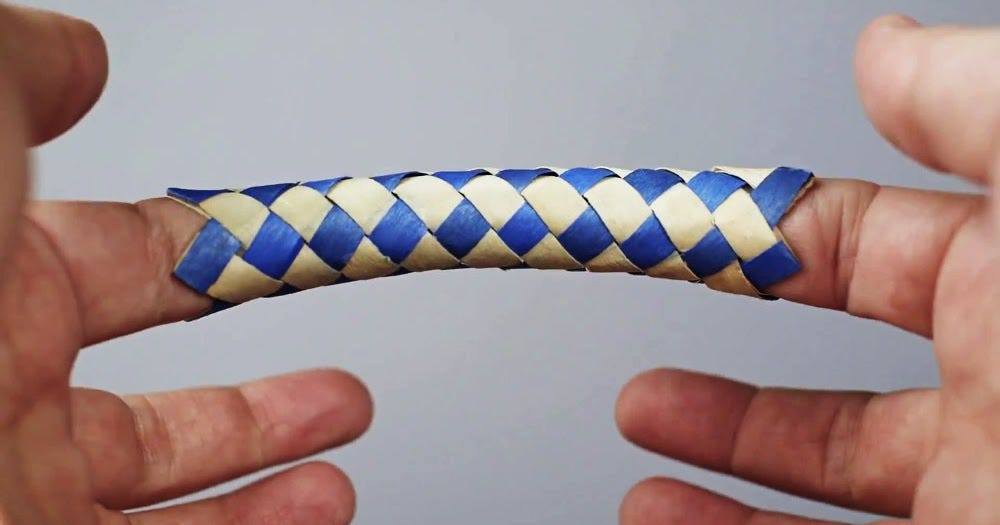“Decision makers can satisfy either by finding optimal solutions for a simplified world, or by finding satisfactory solutions for a more realistic world.”
I watch countless athletes spend the final moments before action searching—often unnecessarily—for certainty.
Think about it.
How often do you stand over a shot and truly not know what to do? Chances are, you’ve got a pretty solid sense. You might be weighing two options, both of which are viable—but you’re rarely clueless.
Most of the time, you have a clear, general idea of what needs to happen. Maybe not perfect, but good. Ninety percent good, even. And yet, that final 10%—that urge to be absolutely sure—has a way of creeping in.
Here’s the paradox: the quest for that final 10%—the stuff that promises certainty—is often what tightens the strings instead of loosening them.
At some point, the search for certainty—which we assume is necessary for freedom—actually becomes the thing that constrains the system.
Consider the finger trap.
The harder you pull—searching, calculating, striving for that last bit of control—the tighter it gets. The tension builds. But the moment you stop resisting, lean in, and trust your instincts, the trap loosens.
Freedom doesn’t come through force. It comes through surrender.
So how do you play with commitment, knowing that certainty is never fully available?
Consider putting.
Do you ever really know if your read is perfect? Do you ever really know if your face is exactly square?
No.
Everyone is guessing—based on feel, experience, and probability. You gather what you can, arrive at something that’s likely right—or right enough—and then you commit. You find out by doing.
I think the freedom starts when you stop chasing the illusion that certainty = freedom. Because ironically, the more you seek perfect knowledge, the more you undercut your ability to commit. And without commitment, execution suffers.
Here’s a simple experiment—and a somewhat rhetorical question:
If you knew your instincts were 90% of the way there, what would stop you from going all in? And really—what would that extra 10% even offer, given how much of the outcome is already subject to randomness, variables, and external noise?
That, to me, is the real work: learning to play from that 90%. To recognize that freedom doesn’t come from being certain— It comes from being willing to move without it.




